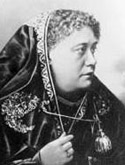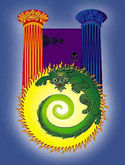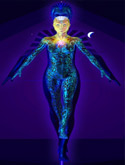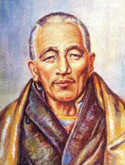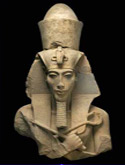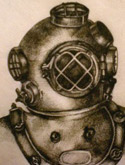 (1596-1650) March 31, 1596, Le Haye, (now called “Descartes”). France, 2:00 AM, LMT (Source: Barbault who believes he had Capricorn rising. Old File gives 2:15 AM, LMT.) A time of approximately 1:54 AM would appropriately place his Sun in the third house, but there are other equally important considerations which suggest a time slightly later than 2:00 am.. A time of 2:04:48 chosen as suggested rectification. Died of pneumonia, on February 11, 1650, Stockholm, Sweden.
(1596-1650) March 31, 1596, Le Haye, (now called “Descartes”). France, 2:00 AM, LMT (Source: Barbault who believes he had Capricorn rising. Old File gives 2:15 AM, LMT.) A time of approximately 1:54 AM would appropriately place his Sun in the third house, but there are other equally important considerations which suggest a time slightly later than 2:00 am.. A time of 2:04:48 chosen as suggested rectification. Died of pneumonia, on February 11, 1650, Stockholm, Sweden.
(Proposed Ascendant, Capricorn; MC, Scorpio; Sun in Aries, conjunct Uranus, Jupiter, Pluto and the NN, all in Aries; Mercury also in Aries but not conjunct the Aries stellium; Moon in Taurus conjunct Venus also in Taurus; Mars, the orthodox ruler of the Sun sign is in the sign of acute thought, Gemini; Saturn in Virgo; Neptune in Leo)


Rene Descartes was one of the modern world’s great intellects. He was principally a philosopher, mathematician and scientist, but he also pursued a wide variety of other interests including metallurgy and fencing (on which he wrote treatises, now lost). Working with the comprehensive and acute energy of the third ray soul his philosophical approach advocated a method of “systematic doubt” intended to lead to certainty in all areas of thought which the human mind might explore. He is best known in philosophical circles for his dictum, “Cogito ergo sum” (“I think, therefore I am”) and for proposing a metaphysics which strictly divided mind from matter. As a mathematician he is credited with inventing analytic geometry (presented in his book Geometry) as well as number of important conventions in mathematical notation which are still in use today. He also studied a number of scientific subjects. In his Dioptrics, he presented the law of refraction, and in his Meteorology he explained the rainbow. He was also a moral philosopher and (although nominally a Catholic), was an outspoken (if wary) advocate of religious tolerance. Descartes surely believed in God, but found his calling in the glorification of reason. The conclusions he reached when thinking about God, the universe and man (and especially his advocacy of Copernicus’ astronomical theories) placed him on a collision course with Church dogma, for which reason he was ever-vigilant about his safety.
Rectifying the Astrological Chart of Rene Descartes By Physiognomy
a. A reasonable astrological chart based on a very approximate time is offered by astrologers Andre Barbault and Marc Penfield, and apparently supported by Maurice Wemyss. One can rest content on their authority or seek confirmation oneself. Let us seek confirmation – firstly from physiognomy.
b. If one studies the likenesses of Rene Descartes (as pictured above) one witnesses a most extraordinary physiognomy. The face shows great intelligence, detachment, wry humor held in reserve, a slightly “arch” attitude seen especially in the arching of the left eyebrow, and a mentally exacting attitude. Of course, one can “read into an image” such qualities, and, no doubt, the analyzing of faces is a very subjective/intuitive matter, yet the author thinks the above mentioned qualities are to be seen in this face, both by the general shape of the features and the nuances associated with these features.
c. We are certain that Descartes’ Sun is in Aries. The strength of the eyebrows could show this to some degree. (When assessing the eyebrows, however, a strong Taurean influence would be present through the Venus and Moon placement in Taurus, and furthered by the influence of the rising decanate of Capricorn – proposedly the Taurean decanate – which, if correct, would contribute to the thickening of the eyebrows). The most amazing feature of the face, however, is the nose, which should be studied in relation to Aries and a number of other signs. On the bridge of the nose many Aries people carry a slight flattening. Certain likenesses of Descartes show this feature pronouncedly present.
d. As Capricorn is proposed as the hypothesized Ascendant, we search the nose for related features and discover that the nose is both boney and, yet, in some way, broad. The boniness is a characteristic of Capricorn. For broadness we will have to search elsewhere.
e. The nose points strongly downwards. This is a characteristic of both Capricorn and a strong Saturn. A downward-pointing nose is not a quality of the sign Aries which, in itself, may give a slightly upward pointing nose, in some cases slightly “pug”. Much will depend upon the ray influence which often has a strong effect upon the appearance of the nose.
f. The angle of the nose and its boniness, therefore, supports the hypothesis of the presence of Capricorn, or at least of a very strong Saturn. A strong Saturn in its own right is, however, either Saturn in its own sign, Capricorn, or the sign of its exaltation, Libra, or an angular Saturn. Since Saturn is in Virgo, it is not in one of its own signs, and there is no way to bring it to the seventh or tenth house cusp (thus making it angular) and still retain the Capricorn Ascendant.
g. In this case Saturn is strong because Capricorn is the probable Ascendant, and not because Saturn is angular or in its own sign. Perhaps if Saturn had been in the Capricorn decanate of Virgo (the second) it would have been strengthened, but it is in the first (or Virgo) decanate.
h. We notice that the nose is not only long (Mars the exoteric ruler of the Aries Sun is placed in Gemini – increasing elongation of the nose, and usually thinning it somewhat) and downward-pointing but, also, rather broad. (There is also a flaring of the nostrils which must be explained.) In this case we may attribute the broadening to the fact that the Aries Sun is in the Leo decanate of Aries (also ruled by the Sun). Leo often broadens the nose or produces the characteristic bump high on the nose – a feature of the so-called “Roman nose”. Capricorn can do this as well. The Leo “bump” (proposedly strengthened by the presence of Capricorn) does indeed seem to be noticeable, along with the flattening more than half-way from the tip to the root (a flattening characteristic of Aries). Really, the nose is not only large but irregular in its contours, displaying many different “signatures”.
i. Satisfied for physiognomical reasons that Capricorn may indeed be present, we will use the decanates to see what part of the Capricorn Ascendant may be rising. Taurus usually broadens the nose, especially closer to the tip. (See the picture of Abraham Maslow whose exoteric ruling planet of Aries, namely Mars, is placed in Taurus).
j. The Taurus influence with respect to the nose and the face in general is very strong. The nose is considerably broader (especially towards the lower part) than it might be strictly under the influence of Capricorn, Aries and Gemini. Of course, Descartes has a powerful conjunction of the Moon and Venus in Taurus, and this would be plenty to give him the Taurean markings – one of the most prominent of which is the dimple in the chin (frequently found when either Taurus or Scorpio is active by sign or by decanate), and in general, the shape of the chin. Capricorn almost always gives a prominent chin, as does Taurus to a degree. Gemini elongates the chin, and Gemini is strong because Mars (a ruling planet) in is Gemini.
k. But what about the Ascendant? If the time of birth is after 1:57:06 am, then the second or Taurus decanate of Capricorn will, indeed, be rising. According to eminent astrologers who have thought about Rene Descartes’ birth chart and for various other reasons listed below, the Taurean decanate is, indeed, the most likely rising decanate, and the markings of the nose seem to confirm this. The peculiar flaring and arching of the nostrils is also a Taurean signature.
l. With respect to Capricorn, in general, its presence is likely to produce an “underbite” of the jaw rather than an overbite (as in Sagittarius). A close examination of these photographs of Descartes definitely reveals the underbite. It is also recognized that a strong presence of Taurus will contribute to such an underbite. (The “bulldog” has an underbite!).
m. If we scan the prominent tip of the nose (often accentuated in the case of Taurus, Capricorn or Cancer) we see, in some photographs at least, that there is slight cleft. This is a signal of the presence of strong Capricorn or Cancer.
n. We are thus seeing physiognomical markings which support zodiacal signs known to be present and, also, signs which are hypothesized. Aries, Taurus and Gemini, we realize, would be present as physiognomical indicators now matter what might be the Ascendant. But the features of a proposed Capricorn Ascendant are also very strong. These features support the hypothesis of Capricorn rising.
o. Further, we are told that Descartes was a puny child with a weak chest and not expected to live. Again these are Capricornian/Saturnian indicators, both of which influences narrow the chest. In fact, it appears that the chest and lungs were weak areas for Descartes who died of pneumonia.
Rectifying the Astrological Chart of Rene Descartes By Sabian Degrees and Cycles
a. The chart has been rectified (from an approximate time of birth) by Barbault who believed that Descartes had Capricorn rising. A time of birth of 2:00 am is generally used, but should be considered an approximation, though, probably, a good one.
b. Work with transits, progressions and directions show the time to be very reasonable quite close to accurate. At least a very convincing chart can be produced using this approximate time.
c. When attempting a rectification, the chart must be seen in overview to determine whether its general configuration fits the life and character of the individual being studied. This chart for Descartes words in that respect.
d. We notice a tremendous conjunction of planets in the third house of mind, which seems more than justifiable considering Descartes life and work in relation to the mental plane. This same heavy concentration in the third house is to be found very justifiably in the charts of Louis Pasteur and William James. We know, therefore, that we are on the right track when considering the distribution of the planets in the houses. If the same stellium of seven planets and the North Node were found, for instance, in the fifth house or the seventh, for instance, the overview of the chart would not be convincing (and of course, the Ascendant would have changed).
e. We notice that the Sun is placed in late second house of the chart. We learn that one must take the time of birth back to 1:57 am to bring the Sun into the third house of mind (by the Placidian house system) where, one would think, it belonged. However, even at the 2:00 am time, the Sun, though technically in the second house, is conjunct the third house cusp. It can very reasonably be read “into” the third house. It is close enough.
f. In cases such as these, it may be advisable to consult the symbolism of the Sabian Symbol degrees. There are three symbols which are prime possibilities for the time-sensitive Ascendant, for the Ascending degree is changing every few minutes and the degrees of the other planets do not change rapidly, not even the Moon. The three degrees which are probable are the tenth, eleventh and twelfth degrees.
g. The tenth degree reads: “An Albatross Feeding from the Hand of a Sailor.” It does not seem especially appropriate and suggests dependency. This is the symbol for the degree which would be rising if we attempted to place the Sun in the third house by using the time of 1:57 am.
h. If we use the rounded off time of 2:00 am, the eleventh degree of Capricorn would be rising and the symbol would read: “Pheasants display their brilliant colors on a vast lawn.” Although it could be said that Descartes did not hide the brilliance of his intellect, his motivation was far other than this symbol suggests.
i. Sometimes it is not possible to find any Sabian Symbol which seems to confirm what is known of the life (and in any case, the Sabian Symbols must be used with caution until extensive research proves their overall reliability), but fortunately, in this case, we have a very apt symbol. At a birth time of 2:01:03 am (using the geocentric latitude correction and the coordinates given for “Descartes”, France), the twelfth degree of Capricorn begins to rise, and its symbol is as follows: “A Student of Nature Lecturing.” Dane Rudhyar in his Astrological Mandala, expands the symbol into the following: “An Illustrated Lecture on Natural Science Reveals Little-Known Aspects of Life.” Further: “The ability to explore unfamiliar realms and discover the laws underlying the complex processes of nature.” The keyword “Exploration” is given.
j. Descartes’ work in the sciences, the high value he placed on empiricism when dealing with natural phenomena, and his explorations into deep realms of thought, this symbol seems most appropriate, especially given the inadequate symbolism of the neighboring degrees which would be rising somewhat before and somewhat after 2:00 am.
k. The twelfth degree of Capricorn as a rising degree may be valuable and we may wish to retain it. The Sabian Symbols are qualitative indicators and have limited precision (even if all astrologers could agree on their correct interpretation). For greater accuracy in rectification work, we must refer to cycles.
l. We have one such cyclic indication which may help us become quite accurate. In later November or early to middle December of 1628 (the exact date is not given in the source material presently accessed by the author) Descartes hastily (and, perhaps, fearfully) departed to the Netherlands in search of freedom to express his thoughts. He sensed danger in France and quickly departed after a high official of the Catholic Church attempted to recruit him for the Catholic counter-reformatory cause.
m. At this general time in Descartes’ life we note a very important progression. At the approximate time of Descartes’ departure for the Netherlands, the Sun is progressing through Taurus very near to the IC or fourth house cusp (that part of the astrological chart which indicates the “home” or one’s “country”). If we use the earliest possible moment when the Capricorn Ascendant moved into the twelfth degree, we find it produces an IC of 11°Taurus 19′.
n. We find, however, that in late November or early December of 1628 when Descartes moved from France to the Netherlands, the progressing Sun had already moved to about 12°Taurus 20′ (give or date a couple of minutes of arc depending on the date of departure. Thus (as an ideal) if we wish the progressed Sun to reach the IC at the time of this important move (he did stay there for sixteen years!) the time of birth should be moved forward by about four minutes. At 2:05:04 am, the IC becomes 12° Taurus 20′. A problem, however, arises. The required Ascending degree, the twelfth degree of Capricorn rising will not be preserved if we move the time of birth forward a full four minutes of clock time; thus, we cannot move the time of birth forward that far and still keep the most indicative Sabian Symbol on the Ascendant. Advancing the time by about three minutes would be more suitable. (We must pause to realize that we are not here dealing with an exact science. The intuition is involved. It is usually impossible to make the cycles of the astrological chart reflect the events of life with perfectly-timed, mechanical exactitude)
o. While we do not know Descartes’ actual date of departure, it was a few weeks after a lecture/debate he gave in Paris. If we wish to preserve the twelfth degree as the ascending degree, the outside limit for the time of birth would be about 2:04:52 am, some three minutes and fifty one seconds after the time when the twelfth degree first appeared on the Ascendant. We will, however, use a slightly earlier time, 2:04:48 to avoid the debated question, “When does a degree actually begin?” For instance, would the twelfth degree begin at 11°Capricorn00′ or at 11°Capricorn01′ (or even at 11°Capricorn00′ 01′).
 n. We have another consideration and potential problem, however. (Here is where rectification becomes like “catching a greased seal” as Charles Jayne, a great rectifier, was wont to say). We should not move too close to 2:04:52 am (or 2:04:48), because of certain events (occurring later in Descartes’ life, in 1640) which focus on the cusp of the fifth house of children. During September the year 1640 (the exact date is not given) when Descartes’ daughter died, transiting Pluto can come to a conjunction of the fifth house cusp and for some days was stationary at 2°Gemini21′. A planet is always powerful when stationary, and the death may have occurred during this stationary period which was in early September. The position of Pluto in Gemini never reached beyond that position during the year 1640. Ideally then, the fifth house cusp should not be too far beyond 2°Gemini21′ (Pluto’s stationary position). But for a time of birth at 2:04:48 am the Placidus cusp of the fifth house is 3°Gemini49′, about a degree and a half farther than the most advanced position of transiting Pluto for that year.
n. We have another consideration and potential problem, however. (Here is where rectification becomes like “catching a greased seal” as Charles Jayne, a great rectifier, was wont to say). We should not move too close to 2:04:52 am (or 2:04:48), because of certain events (occurring later in Descartes’ life, in 1640) which focus on the cusp of the fifth house of children. During September the year 1640 (the exact date is not given) when Descartes’ daughter died, transiting Pluto can come to a conjunction of the fifth house cusp and for some days was stationary at 2°Gemini21′. A planet is always powerful when stationary, and the death may have occurred during this stationary period which was in early September. The position of Pluto in Gemini never reached beyond that position during the year 1640. Ideally then, the fifth house cusp should not be too far beyond 2°Gemini21′ (Pluto’s stationary position). But for a time of birth at 2:04:48 am the Placidus cusp of the fifth house is 3°Gemini49′, about a degree and a half farther than the most advanced position of transiting Pluto for that year.
o. In an ideal world, transiting Pluto would have reached the fifth house cusp at the time of Francine’s death, but it fell short. However there was a solar eclipse on May 20, 1640 reasonably close to that cusp. The eclipse fell on transiting Pluto and also on Descartes’ SAD (solar arc directed) Pluto. Also the earlier solar eclipse at 02°Sagittarius35′ on November 24, 1639, falls quite closely opposite the cusp of the house of children, a little less than a degree from exact. Further, a few months before the death, there was a lunar eclipse on the MC/IC, involving his family life. All in all, these indications for the death of a child are very strong.
Sun SEcl (X) Tr-Tr Nov 24 1639 NS 23:07 02°Sg35′ D MonLEcl (X) Tr-Tr May 5 1640 NS 19:31 15°Sc41′ D Sun SEcl (X) Tr-Tr May 20 1640 NS 20:46 00°Ge10′ D

p. We cannot help but notice that Descartes’ exoterically ruling planet Mars (exoteric ruler of the Sun-sign) found in the fifth house on the cusp of the sixth is natally conjunct Chiron (the planet of wounds) in the fifth house of children. It would appear that fate had arranged this experience. Francine died of scarlet fever, and Mars rules fevers.
q. We must also notice that at the time of the death transiting Chiron had been stationary in the first degree of Gemini, also conjunct the cusp of the fifth house. Chiron is a wounding and healing planet. Its transiting position in its own natal sign is an indicator of the deep wound he received in this area of his life. In fact, he was emotionally devastated.
r. Given these two sets of events – Descartes’ precipitous flight to the Netherlands after his November lecture in 1628 and the death of his daughter Francine in September of 1640, we have to decide which of them should have greater weight. We also have to preserve at the Ascendant, if we can, the most apt Sabian Symbol for Descartes’ life – the twelfth degree.
s. To preserve the degree we will not move beyond 2:04:48 am. The closer we are to that degree, the closer to the IC is the progressing Sun at the time of his Nov/Dec departure to the Netherlands. But the closer we are to the 2:04:48, the farther is the degree of the fifth house cusp from the most advanced position of death-dealing Pluto.
t. In all these considerations, however, we are already very close to accurate, and are considering a possible margin of error of about three minutes with regard to birth time.
u. Probably, Descartes had been thinking about relocating even before his progressing Sun came to the IC, so the move could have occurred a little after the progressing Sun arrived at the IC. The Moon has progressed into Cancer during the early part of the year 1628 and was at the time of the move conjuncting Mars (indicating the taking of action with respect to home or place of residence). We cannot expect an exact line up of the progressing Sun with the IC. We are close enough.
v. The judgment of the author is that we should favor the position of the progressing Sun and keep it as close to the IC as possible (for the time of Descartes’ departure to the Netherlands). Even though transiting Pluto misses the fifth house cusp by more than a degree, it was stationary and therefore powerful at the time of Francine’s death. That, and the eclipse which conjuncted the fifth house cusp within about three degrees, transiting Pluto within about one degree and progressing Pluto within about two degrees would be enough to indicate the unfortunate events which occurred in relation to the fifth house cusp in September of 1640.
w. It is at this point that we should introduce a thought about the Sabian Symbol for the MC or tenth house cusp. We have decided to work to retain the twelfth degree as the Ascending degree due to the apt Sabian Symbol, “A Student of Nature Lecturing”. The MC degree which results from our choice of birth time, 2:04:48 am is the thirteenth degree of Scorpio: “An Inventor Performs a Laboratory Experiment.” “The driving urge toward achievement which is at the root of civilization.” The key phrase is the “Ability to Relate Seemingly Unrelated Facts”. About a minute before 2:04:38, i.e., at 2:03:48 the thirteenth degree came to the MC. Thus we have another delimiter.
x. If we move the time of birth back to 2:03:48 am, we can retain the MC degree, but not any earlier. So, using the Sabian Symbols and all the other constraints, we have narrowed our possibilities to a one minute frame: 2:03:48 am to 2:04:48 am. Either one would do. The earlier time makes the Pluto activity of at the fifth house closer to exact. The later time makes the Sun’s progression to the IC at the time of his departure to the Netherlands closer to exact. For practical purposes either one will do.
y. So the time of birth to be proposed and used will be 2:04:48 am, but we will keep our eye on the effects of using 2:03:48 or, let us say, 2:04 am, rounded off. We remember that 2:04:48 is used instead of 2:04:52 (when the rising degrees reads 12°Capricorn 00′) just to ensure that we eliminate the ambiguity concerning when the thirteenth degree begins. Some say it does not begin until we reach 12°Capricorn 01′, but let us not allow the Ascendant to even touch 12°Capricorn 00′. We will stop at 11°Capricorn 59′, just to be sure.
A Few Additional Points of Timing to Bear in Mind when Interpreting the Astrological Chart of Rene Descartes
a. Some eclipses offer further testimony for the accuracy of the proposed chart. In 1628, Descartes left for the Netherlands, seeking at atmosphere of toleration where he could think and write as he wished without fear of persecution. Early in that year the progressed Moon moved into Cancer. He was seeking a new home and refused to become an apologist, doctrinaire philosopher for an important and powerful Catholic official. There were two significant eclipses, touching his Asc/Dsc axis.
Sun SEcl (X) Tr-Tr Jan 6 1628 NS 16:00 15°Cp57′ D Sun SEcl (X) Tr-Tr Jul 1 1628 NS 10:58 09°Cn47′ D
The two eclipses can be considered direct “hits”, being equidistant from the proposed Asc/Dsc axis. The move was extremely significant and lasted for some sixteen years. The eclipses involve the identity point (the Ascendant) and the point of relationships (Descendant). Descartes’ sense of himself and the degree to which he could express himself changed dramatically. So also did his relations.
b. We know that in 1635 he had a child, Francine, born to Helena Jans who served as maid in the household. In 1634, only two days before his birthday, we see an important solar eclipse on his Aries Sun (the Sun ruling part of the seventh house and the eighth).
Sun SEcl (X) Tr-Tr Mar 29 1634 NS 02:33 08°Ar23′ D
c. Transiting Jupiter came to the seventh house cusp during June and July of 1634 indicating the probable start of the relationship which led to the birth of his daughter. The angles of the chart appear to be working. Francine, was conceived in Amsterdam on a Sunday, in October 1634 and was born on July 28th, 1635.
d. We note as well in 1635 that progressing Mercury conjuncts progressing Jupiter in early May 1635 (the year Francine was born) and remains closely in aspect at the time of Francine’s birth. Francine was born according to the baptismal records, on July 28, 1635. This conjunction confirms the thought that the cusp of the fifth house should be Gemini ruled by Mercury. Jupiter represents the fulfillment of the birth (and the happiness of it) and Mercury (ruling the fifth house cusp in the proposed chart) is the indicator of the child. We also find transiting Ceres, the nurturing asteroid exactly at the seventh house cusp on the day of the birth.

Descartes’ Rayology and Astrology
Now that we are quite assured of the reasonable accuracy of Descartes’ chart, we can interpret with greater confidence.
Rene Descartes was a profoundly third ray individual. Those equipped with a powerful third ray, as well as an emphasis in Aries (five planets) and Gemini (his exoteric Sun Sign ruler, Mars, is place there), can become experts in “thinking about thinking”. Descartes is famous for his philosophical dictum: “I think, therefore, I am”. This statement, as can easily be seen, is closely related to the Aries Mantram, “I come forth and from the plane of mind, I rule.” A strong head-centeredness is indicated. As well, a vigorous fifth ray is can be seen in Descartes’ thought process – responsible for what has been called in philosophy, “the Cartesian split” between mind and body, for he considered mind and body two separate substances, the first indivisible and “non-extended”, and the second, characterized by “extension” and divisible.
Descartes was a logician who sought certainty in his thought process. His exacting mind can most reasonably be conceived as focussed on the fifth ray. He loved truth and sought not to be deceived, deluded or misled. Advanced third and fifth ray types seek truth and fact above all. They seek to overcome illusion (often by the power of thought alone), though their early efforts (insufficiently illumined by the soul) may embroil them still more deeply in the very illusion they seek to overcome.
Descartes searched for a secure starting point or premise from which logical deduction might proceed with assurance. This was the meaning of his dictum, “I think, therefore I am” (“Cogito ergo sum.”). After rigorously applying systematic doubt to every possible assumption he might make about himself or about the nature of the world (for all those assumptions might be illusory or incorrect) he discovered he was unable to doubt his very own existence. Because he could not doubt the self-evident presence (and, therefore, reality) of his own process of thinking (for it persisted whether or not it was deluded or accurate, inspired or deceived), he concluded with “intuitive” certainty that he, indeed, existed. From that certainty he could, then, logically and rigorously, erect the edifice of his philosophy.
We need not look far for the presence of mental acuity in the chart of Rene Descartes. Five planets and the North Node are concentrated in the sign Aries, in (or extremely close to) the third, or mental, house of the horoscope. In the disciple/initiate, Aries proves to be a sign with considerable mental focus. An indication of this mental focus is the esoteric rulership of Aries by mental Mercury.
Mercury, the esoteric ruler of the Aries Sun (and it is legitimate to consider the esoteric ruler when working with a soul as advanced as Descartes) is actually found in Aries (its own sign, esoterically considered) and in the critical thirtieth degree. Further, Mercury receives an out-of-sign trine from exacting Saturn in Virgo, the sign of keen discrimination, contributing to the general fifth ray expression. Saturn (the planet of structure), let us note, is both the exoteric and esoteric ruler of the proposed Capricorn Ascendant. Descartes sought to structure his thought rigorously. Further, thoughtful Mercury is in very close parallel to Venus (the planet of the fifth ray) placed in one of its own signs, Taurus. This conjunction certainly added fifth ray light to the mind.
That Descartes sought dependability in all mental considerations can be seen from his practical Taurus Moon, also in the third house along with the stellium in Aries. The pursuit of light and illumination can be seen, esoterically, from the conjunction of Moon and Venus in luminous Taurus. The fifth ray mind has the power to “throw light” on many matters. Interestingly, Descartes speculated upon the pineal gland as the seat of the soul; Venus (the planet of the Solar Angels, and customarily ruling the ajna center) in Taurus (associated with the third eye) can easily be seen as related to the pineal gland.
Descartes’ acuity of mind is promoted by Mars (the exoteric ruler of the Aries Sun) placed in intelligent, mentally-active Gemini. Found in the fifth house on the cusp of the sixth and conjunct Chiron in the fifth (the planet of wounding) Mars also can be seen as contributing to his death by pneumonia – Gemini ruling the lungs and Mars, infection. The conjunction of Uranus, Jupiter and Pluto in the third house of mind is powerful, indeed, for the expansion, deepening and transformation of the mental process. We might say that Descartes caused a revolution in the field of thought, bringing about a kind of mental detachment which is needed if one is to dis-identify from bio-psychic processes – a great necessity at a certain stage of discipleship (and a necessity for human thought during the “Age of Reason” which covered much of the seventeenth century. Some will say, however, that Descartes carried the cleavage (fifth ray) too far. It is interesting that the rays within his energy system having the greatest impact upon the human thought process, the third and fifth rays, are the rays of France, his native country.
Additional Astro-Rayological Factors of Note
a. The factor of light was of extreme importance to Descartes. Not only does he have a close conjunction of the Moon and Venus in the sixth degree of Taurus, but he has the Taurus decanate of Capricorn rising, a decanate ruled by illuminative Venus. The light of the Solar Angel (the “Light of the Soul”) would be of great importance to him, whether or not he called it by that name.
b. Descartes’ valued contemplation highly. Venus is the planet of contemplation and its strong position by sign and aspect strengthened in Descartes this advanced meditative approach. He already knew what many students of spirituality are today struggling to learn. His deepest thoughts were derived through his power to contemplate.
c. Curiously, the degree for the Venus/Moon conjunction reads, “A Cantilever Bridge Across A Deep Gorge”. “The conquest of separativeness through group cooperation.” The capacity to “Conquer Obstacles”. Many of Descartes’ scientific findings and his general positive to attitude towards the progressive possibilities opened by reason and scientific enquiry are representative of this degree, but his attitude towards mind and matter represented them as eternally distinct and opposed to each other – bridged only by God’s intervention.
d. In the chart of an advanced soul (which Descartes undoubtedly was and is), this Venus/Moon conjunction is a most occult indication. Venus (placed in its own sign Taurus – the “Mother of Illumination”) with the Moon (both in the third house of mind) is an intensely strong light-bearing combination. The Venus/Moon conjunction, trined by Saturn (which is the esoteric ruler of the Ascendant), brings together two important planets related to Capricorn – Saturn and Venus and relates them to the “field to be transformed”, symbolized by the Moon. Venus is the hierarchical ruler of Capricorn and the ruler of the second decanate (the rising decanate) by means of which the light of the Solar Angel is steadily pursued and increased. Saturn, Venus and the Moon in this configuration are a potentially initiatory combination.
e. The Moon is exalted in Taurus, which is either good or bad depending on the quality of the individual. In this case, the exalted Moon represents the heightened potential of lunar substance, once transformed, to carry the light of Venus. A initially transmutative, then transformative and, finally, transfiguring process is underway, and “permeative” soul light is the medium of the transfiguration.
f. We find in Capricorn and its ruling planet Saturn not only rigor and exaction (of which Descartes was notably capable – in his thought life at least) but the reason for that rigor – the disciplining required for ever-more complete illumination.
g. Descartes’ famous speculations about the pineal gland as the seat of the soul were appropriate to one who stood at his stage of initiatory development. He was climbing the Mountain of Illumination and wished to know, technically as always, the source and cause of that illumination.
h. Descartes’ was principally a rationalist rather than an empiricist (though he deeply respected empiricism, and the new scientific paradigm initiated by the philosopher Sir Francis Bacon, the later Master R). But Descartes was living in the “Age of Reason” (a time when the third ray was very powerful, moreso that the fifth, which awaited its cyclic re-introduction in 1775), and so his method of deriving truth was through self-contained thinking, i.e., reasoning logically from self-evident principles. His was an apriori method. His self-evident principles were in the nature of clear intuitions which he could not doubt. That he reasoned with exactitude can be attributed to the presence of his ruling planet Saturn in the sign of fastidiousness, Virgo. He worked with a combination of the third and fifth rays, as the trine from third ray Saturn to fifth ray Venus suggests.
i. The mental indicators in the charts are formidable. Capricorn rises, conducting in this case, primarily, the third ray rather than the first or the seventh. Its ruler, Saturn, is in the material sign Virgo (deeply and formerly associated with the third aspect of divinity). Thus Descartes worked not only on the plane of mind but with matter. These were two poles in his existence – mind and matter. Since he was, in a practical way, so versatile at working with both, it is surprising that his metaphysics saw these two “substances” as essentially distinct and unbridgeable except by divine intervention.
j. A word about skepticism: If we think carefully about Descartes’ methods, we shall see they are influenced by a profound skepticism – at least he began with this attitude as he moved towards a more certain position with respect to truth. Modern philosophers are still influenced by Cartesian skepticism. In Descartes’ Age it was a healthy reaction to the prevailing gullibility and encumbering scholasticism. Today, its value may have run its course.
k. In Descartes’ Meditations Descartes begins with methodic doubt, rejecting as though false all types of knowledge by which he was ever deceived. His arguments derive from the Pyrrhonism of the Greek skeptic Sextus Empiricus (from whom the term “empiricism” is derived) as reflected in the skeptical writings of Michel de Montaigne and Pierre Charron.
l. Can we find it his astrological chart zodiacal or planetary predispositions for this fundamental skepticism? Perhaps the presence of three earth signs, with planets in grand trine to each other, represents a beginning. Saturn as double ruler of Capricorn and in harmonious aspect to the planets of thought, Mercury and Venus, and regulating the irrational Moon, demands truth as a foundation for thought. Descartes uses a stern philosophical skepticism to remove any possibility of being deceived. Saturn in Virgo is so strong in this respect. Its quintile to Mars (another mental planet, especially as it is placed in Gemini) indicates an ability to still the agile, thoughtform-making tendencies of the lower mind – which must have been immense is Descartes’ case – and subject diverse thoughts to a rigorous testing.) All the acuity of the third ray was involved in this process. If the fifth ray gives, according to Besant, “exactitude of action”, the third ray gives “exactitude of thought”. It is the “acute energy of divine mental perception”. Descartes’ sought such lofty perceptions, but realize that he had to earn them by applying the rigorous methodology of systematic doubt. In this case skepticism was enlisted in the service of the divine. Today in certain circles, skepticism has become a god it itself, its purpose forgotten. This must soon be remedied.
m. Transition from the Age of Pisces demanded an end to “blind faith”. It is inevitable that thinkers had to come along who would challenge the assumptions built up during the Age of Faith. The Age of Reason was a necessary corrective to unfounded belief, and Descartes’ was one of reason’s greatest exponents.
n. We have to realize that the sign/constellation Aries expresses an energy which inclines those it conditions to do all things and derive all things from themselves. Aries is an essentially rebellious influence. It discounts all former conditioning (i.e., the influence of the planet Saturn which “falls” in this sign). The Sun (representing the “unconditioned center of Selfhood” is exalted in Aries.
o. Descartes began his true and deep quest for knowledge with an act of mental rebellion. He threw away all authority other than that of his own intuition, logic and sense of truth. We can see that he had to do this. The North Node closely conjuncts the Sun and indicates the need for the assertion of great independence in the field of thought. (We will read the Sun as if it is in the third house, as it is so close to the cusp and also in the sign which is found at the third house cusp.)
p. We note that Uranus, the hierarchical ruler of Aries, is fairly closely conjunct the Sun. This conjunction represents rebellion against mental authority and, instead, an embrace of authentic mental self-determination – an attitude which insists that one derive truth for himself rather than accept it on the authority of others.
q. We see that two of the rulers of Aries – the esoteric ruler Mercury and hierarchical ruler, Uranus, are actually in Aries and in a house congenial to it – the third. The orthodox ruler, Mars, is in the third sign Gemini, and hence again the mental influence and extreme mental activity. Thus all three rulers of Aries reinforce the power of the mind.
r. If we are looking for one of the reasons for Descartes’ frequent moves and changes of residence, we can look to this Mars-in-Gemini position, reinforced by his very powerful third ray at the soul level and perhaps at the physical level.
s. Jupiter in Aries conjuncts Uranus making an energic combination which confers what the Tibetan calls “beneficent organization”. To the individual possessed of this combination, it is as if “all things are possible through original thought”. Jupiter in Aries conjunct the Sun, Uranus and Pluto, would immensely broaden the scope of inquiry, and make one comprehensive (even universal) in one’s thinking.
t. Thus, great mental creativity and fertility are suggested. There is the capacity to embrace whole disciplines of thought and relate them to other disciplines, creating a well-organized and comprehensive synthesis. Descartes addressed himself to metaphysics, physics, mechanics, medicine and morality, to name five distinct fields of human thinking. When one considers all the various areas which Descartes pondered, and to which he made significant contributions, one is somewhat reminded of the genius Leibniz, who was much influenced by Descartes (though disagreeing with him in certain fundamental ways).
u. Descartes had an interest in Rosicrucianism, though he appeared to reject its magical and mystical beliefs. Nevertheless, he lived in many ways as if he were a member of the Rosicrucian order – a virtual vegetarian, living a single and rather secluded life, changing residences often, practicing medicine (without charge) and like Master R., interested in longevity. (The energy of Capricorn inclines towards an interest in longevity.) Occult lore tells us that Master R. could stop the aging process and did; Descartes, naturally, could not, and some were amused that he died at a relatively young age, having lived only about half of the hundred years he had imagined for himself. It would seem that there was a subtle link between him and the Master R., whose image/likeness, as the Comte de St. Germain, shows the presence of a strong Saturn, perhaps Capricorn, and strong Gemini as well.
v. Certain great rationalists seem to have had links to the Comte/Master R. – perhaps Newton among them. We are told that when Master R. became the Mahachohan, transferring His focus to the third ray, he took a number of his more advanced seventh ray disciples with him (i.e., onto the third ray). Philosophical/mathematical/scientific workers already upon the third ray, such as Descartes’, would naturally be related to Him. While for these third ray/fifth ray types the emphasis required by the spirit of their times had to be on reason and the mind, the deeper more occult roots (in which Master R. interested Himself deeply) lay just beneath the surface, ready to be considered by them when the time was right. Newton (the most academically respectable of all these thinkers) was, for instance, profoundly interested in alchemy and astrology.
w. Really Descartes was both a rationalist and an intuitive. His antahkarana was working (thought not built in the way that present day occultists build it). It was built through philosophical enquiry and meditation, as he conceived it. We see two synthesizing planets (Saturn and Neptune) in trine aspect to the tremendous stellium of planets spanning the interval from the eleventh degree of Aries to the sixth degree of Taurus.
x. Neptune (in its own esoteric sign “of the heart” – Leo) trines the Sun, Uranus and Jupiter, giving great inspiration and, intuition adding buddhic access to his super-rationalism.
y. Saturn, on the other hand, renders the actions of Mercury exact and exacting, applying its ray to Venus and the Moon as well. This is a manasic complex.
z. Together, we have buddhi-manas (albeit with a third ray flavor rather than a second).
aa. It is important to consider the relationship between Capricorn, the soul indicator, and Aries, more pertaining to the personality. Both are signs associated with the third initiation, and in the case of Descartes may have to be considered as such – at least in terms of the preparation for that initiation. The three watchwords for this initiation are “Integration. Direction. Science”. Each of thee can be related directly to the goals which Descartes set for himself and the methodology (Saturn in Virgo) he utilized.
bb. There will be a particular relationship between Saturn and Mercury which, in the chart of the initiate is of defining importance. Saturn in Virgo is the esoteric ruler of the Sun-sign and Mercury in Aries is the esoteric ruler of the Aries Sun. Because Descartes was, at the very least, an initiate of the threshold (and working on third initiation themes), it is possible to use the esoteric ruler of the Sun sign, not just the exoteric ruler.
Soul Purpose
The astrological chart (in combination with many other more subtle astrological charts which can be derived from it) should be useful in shedding light on the soul purpose of an individual in any particular incarnation.
Descartes was a third ray soul, and (perhaps – as his intellect was so strong, primarily a third ray monad as well). His personality was essentially tolerant and, from reports, genial. He was amative (the Venus/Moon conjunction, Ceres rising in Capricorn, and liberal in personal matters (Jupiter conjunct the Sun). His “love life” was a significant part of his personality expression, though far less discussed than his contributions to the world of thought. When accused of having illegitimate children, he said something to this effect: “I am a man and have taken no vows of chastity”. He also, apparently, disliked confrontation, frequently avoiding it. He also had, shall we say, a somewhat “lazy” side. It was his habit to remain in bed until ten in the morning (though it was also his habit to work, in bed, until very late hours). When in 1650 Queen Christina of Sweden insisted that he rise at 5:00 am to teach her (in the midst of the cold Swedish winter), the change of sleeping habits was very damaging to him. In fact, it killed him. Gathering the evidence, perhaps we see a second ray personality. More research on this point would be required. His mental ray was almost certainly the fifth. A more exacting and discriminative thinker would be hard to find. He believed in the control of the emotions and was not given to emotional displays but at the death of his daughter his tears flowed copiously. The second ray, it appears, was operative in the astral sphere, but, also, he was devoted to truth. Essentially, with the stoics, he believed in changing oneself rather than attempting to change the world. We cannot know the ray of the physical body, but there was so much movement in his life that one suspects the third. It would appear that the third and second rays were curiously mixed. His avoidance of confrontation and danger (so uncharacteristic of an Aries person) may be attributed to the second ray in his makeup.
A proposed ray structure is therefore 332-523.
The combination of the third ray and Capricorn should define his soul purpose. He was striving towards a point of perspective from which he could achieve a panoramic vision of the world of thought. It is said that his goal was to be the “master of nature”. Although he was inevitably involved in generating illusions, his purpose was to rid the world of thought of error and illusion. He was a radical in this respect (as Pluto in the third house of mind, loosely conjunct Jupiter, Uranus and the Sun reveals). It is Pluto that inspired him to eliminate all untrue assumptions from his thought life. Truth was his god. Like so many great third ray thinkers, he sought to erect a structure of thought, purged of error. By the time Descartes was born, Scholasticism had burdened the world of thought with many unverifiable notions, many obviously erroneous. Descartes with his Saturn in Virgo sought to, as it were, “clear the clutter”, and create methodologies which logically and inevitably would lead to the perception of truth, and to the acquisition of masterful power over nature which such perception would bring.
Some claim that Descartes’ thinking is responsible for the attitude, prevalent today, that man is to be the master of nature. The Cartesian split, they say, gave man the impression that he was distinct from nature rather than an integral part of it. Many modern thinkers work to overcome this split. The findings of modern physics, revealing that the observer affects his observation, have already done much to heal the gap between mind and matter which Descartes conceptualized.
In Rene Descartes’ approach we witness an independent assault against illusion. It is here that his assertive Aries energy is applied. Men were not his enemies; errors and illusions were. He certainly had mental courage (if not its physical counterpart). His task (North Node) was to plunge into the world of thought, and set the “jungles of illusion” ablaze. This is the gift of Aries, accentuated by Mercury in Aries. But to burn the “jungles” would not be enough. Something would have to be built, erected. Some edifice of thought would have to rise upon the ruin of the old paradigms. It is here that we see the power of Descartes’ Capricorn Ascendant, sub-ruled by constructive Taurus and illuminative Venus. He was a builder in the world of thought. Indeed, like Aristotle before him, his construction affected the thinking of millions of people and endured in its effects until the beginning of the twentieth century. Aries conferred upon his mental audacity. Capricorn gave him the ambition to comprehend the structure of nature and to master it. When we think of Descartes, we inevitably think about the quality of our thought and the responsibility of all those who build in thought and wield it. When we think of Descartes, we think of the power of mind, and what can be accomplished through its use.
Quotations by Rene Descartes
Cogito ergo sum. (I think; therefore I am.)
Each problem that I solved became a rule which served afterwards to solve other problems.
If you would be a real seeker after truth, it is necessary that at least once in your life you doubt, as far as possible, all things.
In order to improve the mind, we ought less to learn, than to contemplate.
The reading of all good books is indeed like a conversation with the noblest men of past centuries who were the authors of them, nay a carefully studied conversation, in which they reveal to us none but the best of their thoughts.
It is not enough to have a good mind. The main thing is to use it well. ‘Le Discours de la Methode,’ 1637
One cannot conceive anything so strange and so implausible that it has not already been said by one philosopher or another. ‘Le Discours de la Methode,’ 1637
The first precept was never to accept a thing as true until I knew it as such without a single doubt. ‘Le Discours de la Methode,’ 1637
The greatest minds are capable of the greatest vices as well as of the greatest virtues. ‘Le Discours de la Methode,’ 1637
It is only prudent never to place complete confidence in that by which we have even once been deceived. ‘Meditations’.

